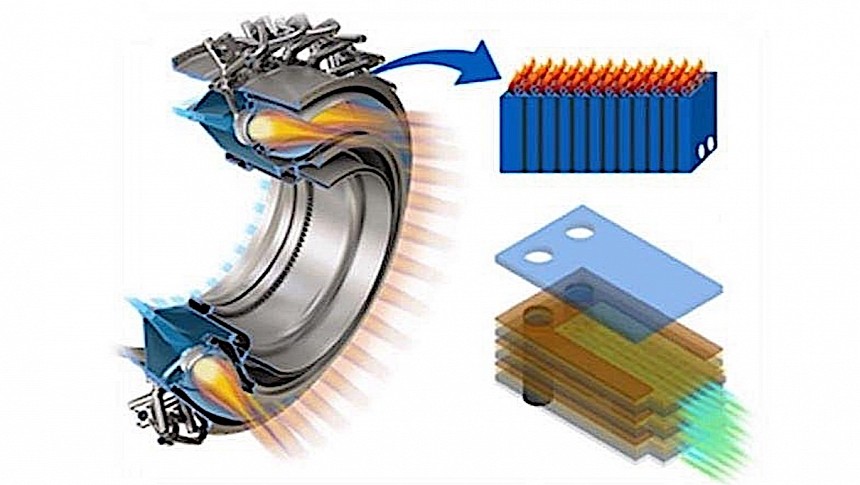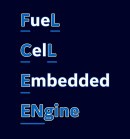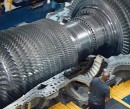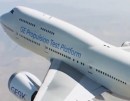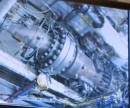The race to completely transform the aviation industry from one of the world's largest polluters into a more environment-friendly affair is constantly heating up, and it also takes on new, rather strange (or at least unexpected) forms. The latest gimmick: combining fuel cells with a gas turbine engine, and feeding them sustainable aviation fuel (SAF).
As you all know, fuel cells are pieces of hardware that transform the chemical energy of a fuel and an oxidizing agent into electricity. They are most commonly used in power generation. They are technically more environmentally friendly than other systems, as they do not generate nitrogen oxides, particulate matter or carbon dioxide.
Gas turbines or jet engines, on the other hand, are the backbone of present-day aviation, using fuel and compressed air to push an aircraft forward. They technically remain combustion engines, and when not running on some kind of green fuel, they can be quite harmful.
Combining these two technologies, and making them run on SAF, could prove essential in helping drive down aircraft consumption and emission levels. At least that's what GE Aerospace seems to believe, and the reason behind a project called FLyCLEEN.
FLyCLEEN stands for FueL CelL Embedded Engine and calls for solid oxide fuel cells to be integrated with a jet engine in the hopes the tech might one day power commercial passenger hybrid airplanes.
The company announced this week it completed the design phase of the project, and it's now moving into Phase 2 thanks to a $4.5 million award from the Advanced Research Projects Agency–Energy (ARPA-E).
This stage of the project will require GE to build a 25kW power generation subsystem that uses both a fuel cell and an SAF-powered gas turbine. It's not exactly clear how the system will work, but we're told the fuel cells will be mounted on the combustion engine walls, a novel concept to combine the two.
The green aviation fuel will be used by both the fuel cell and the gas turbine. Part of it will be transformed into synthetic gas and will feed the fuel cell, while the rest will be burned inside the jet engine.
The main hope is that the technology will "vastly improve the efficiency of converting the chemical energy from SAF into electric power," providing yet another solution to moving the aviation industry closer to its goal of net zero CO2 emissions.
We are not told exactly how long we'll have to wait until the hybrid tech is assembled and put to the test, but there's no doubt about it: if GE succeeds, it will scream its achievement far and wide.
We will keep an eye on this story and update as soon as more info becomes available.
Gas turbines or jet engines, on the other hand, are the backbone of present-day aviation, using fuel and compressed air to push an aircraft forward. They technically remain combustion engines, and when not running on some kind of green fuel, they can be quite harmful.
Combining these two technologies, and making them run on SAF, could prove essential in helping drive down aircraft consumption and emission levels. At least that's what GE Aerospace seems to believe, and the reason behind a project called FLyCLEEN.
FLyCLEEN stands for FueL CelL Embedded Engine and calls for solid oxide fuel cells to be integrated with a jet engine in the hopes the tech might one day power commercial passenger hybrid airplanes.
The company announced this week it completed the design phase of the project, and it's now moving into Phase 2 thanks to a $4.5 million award from the Advanced Research Projects Agency–Energy (ARPA-E).
This stage of the project will require GE to build a 25kW power generation subsystem that uses both a fuel cell and an SAF-powered gas turbine. It's not exactly clear how the system will work, but we're told the fuel cells will be mounted on the combustion engine walls, a novel concept to combine the two.
The green aviation fuel will be used by both the fuel cell and the gas turbine. Part of it will be transformed into synthetic gas and will feed the fuel cell, while the rest will be burned inside the jet engine.
The main hope is that the technology will "vastly improve the efficiency of converting the chemical energy from SAF into electric power," providing yet another solution to moving the aviation industry closer to its goal of net zero CO2 emissions.
We are not told exactly how long we'll have to wait until the hybrid tech is assembled and put to the test, but there's no doubt about it: if GE succeeds, it will scream its achievement far and wide.
We will keep an eye on this story and update as soon as more info becomes available.
